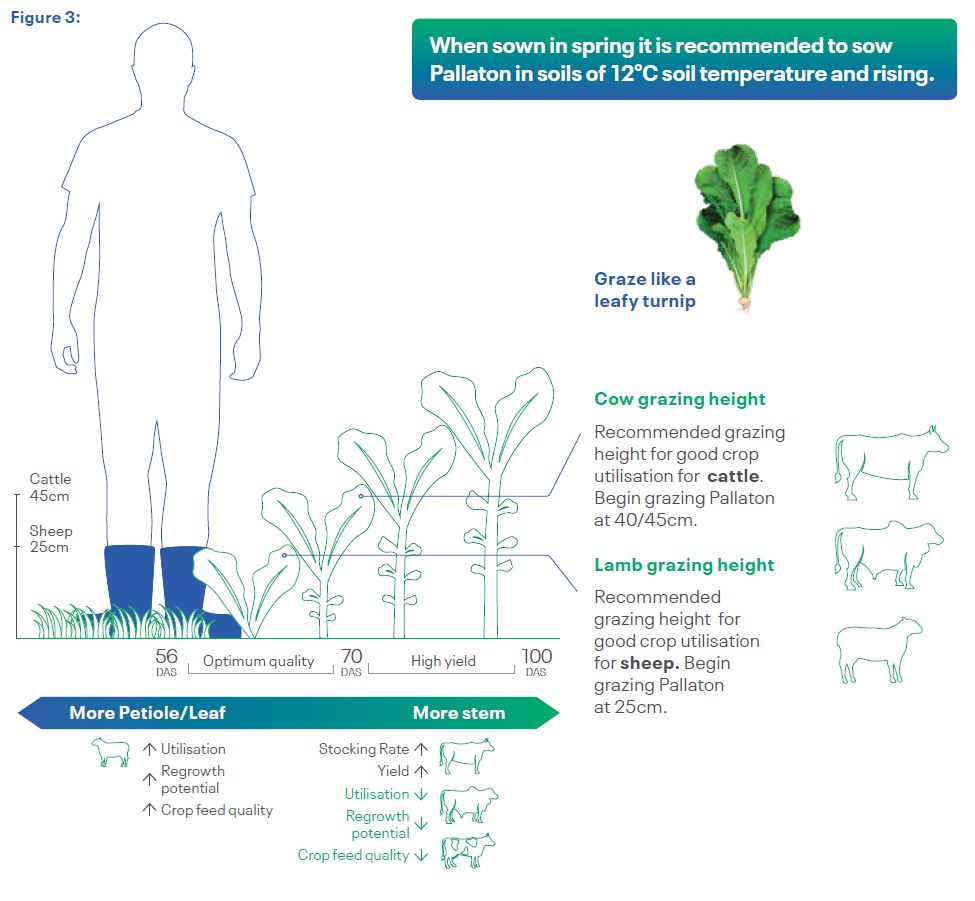Get in Touch
Contact Us
National team

Find Your Local Sales Agronomist
Pallaton Raphno
Sheep: Begin grazing Pallaton at 25cm (this can also be measured by roughly middle of shin/top of gumboot) and stop grazing between 5 and 10cm.
Cattle: Begin grazing Pallaton at 40/45cm (this can also be measured by roughly knee height) and stop grazing between 5 and 10cm.

Dr Charlotte Westwood, Veterinary Nutritionist
If you don’t have lambs/cattle on hand when Pallaton is ready to graze, consider another stock class such as ewes. Ewes will help ‘open up’ the crop which can be very beneficial for introducing lambs to the crop afterwards.
Stocking rate is very important to get right. Understocking will result in poorer utilisation and risk losing quality, while overstocking may see you run short of feed.
If you can’t go early, not all is lost. It may mean you can carry a higher yield forward to a period when you require it. However, adjust your expectations and understand your regrowth potential, crop utilisation and/or crop feed quality may be compromised.
It’s a pretty simple system! Often when finishing the first rotation of any brassica crop, the amount of animals grazing that first rotation may exceed what the crop can stock for the second rotation. By having another complementary brassica crop on farm like a forage rape safety net, Pallaton will be given another couple of weeks to increase its total yield (kgDM/ha). This way, when starting the second rotation of the Pallaton, the yield in the 1st cell of should be 2500-3000kgDM/ha.
As an example, a safety net brassica system could have 15ha of Pallaton and 5ha of Mainstar forage rape. Once
you have finished grazing the Pallaton, shift the stock to the Mainstar. You can shift the stock back to Pallaton when grazing has finished on the Mainstar or, when the yield of Pallaton is 2500-3000kgDM/ha.” Explains Isaac Berry.